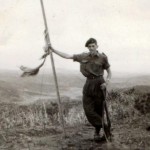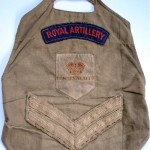Substantial deep defensive trench systems were built with duck boards essential in the wet season. Maintaining the trenches and the barbed wire was continual with most done at night. Our trenches were located almost entirely around the perimeter of the hill top or its plateau. This enabled infantry patrols of both sides to probe between and behind these defences. Approach areas were well mined although there would normally be some sort of low warning wire complete with small metal triangles as a warning. The Royal Engineer sappers did a great job helping the infantry with mine-work and blowing up the tunnels at the paddy level of our hills that had been excavated to hide the Chinese troops prior to attacks.
By the time of my arrival in 1952, the situation was not dissimilar to the static trench warfare of WWI with periodic heavy shelling periods from both sides as either a prelude to an attack or to wear the defenders down, or by disturbing their rest and necessary every day activities.
- Chalkie White
- Gerry Haddon
- Hill 159
- Alan Little
- Worn in Korea






Recent Comments